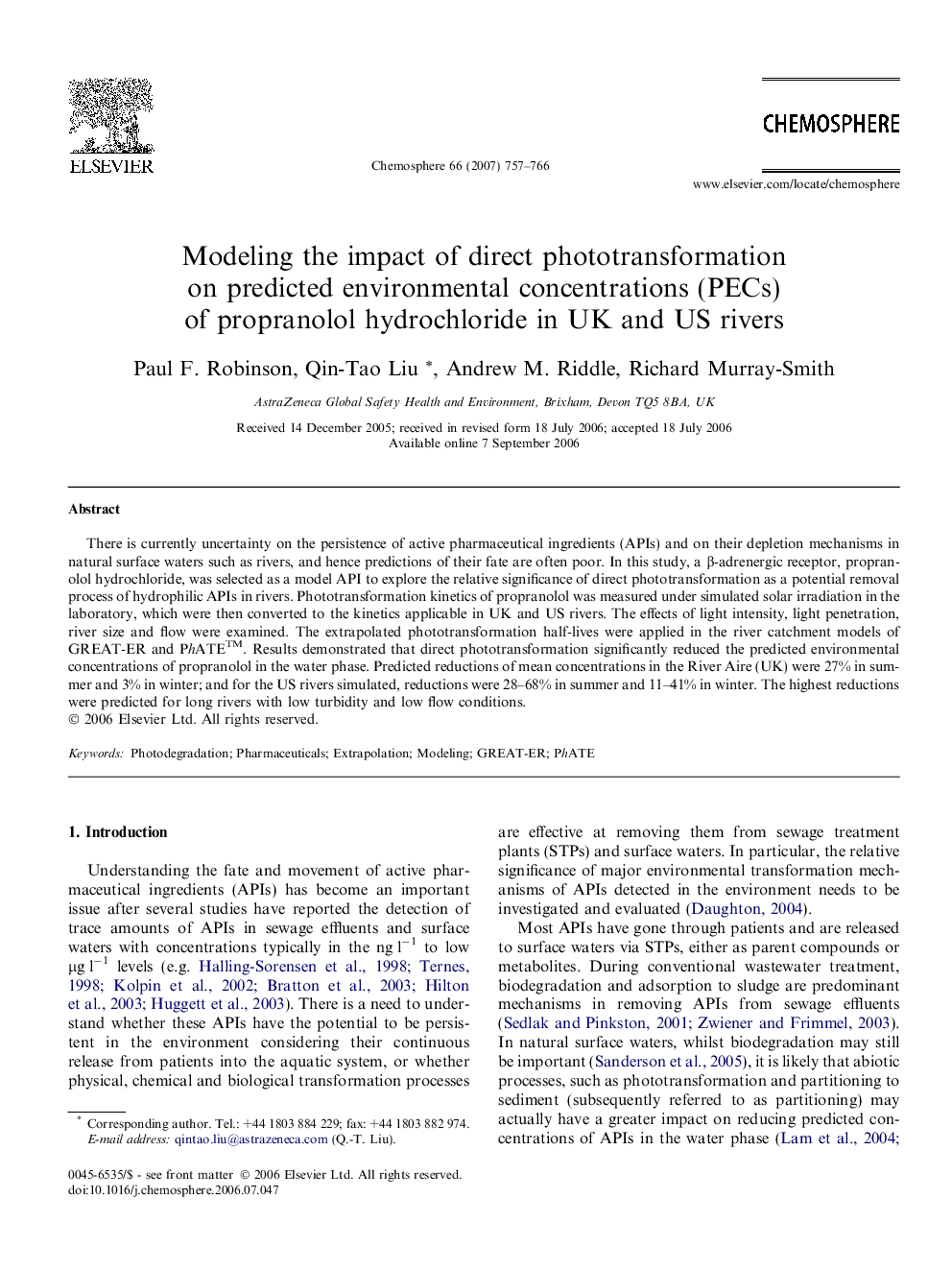| Article ID | Journal | Published Year | Pages | File Type |
|---|---|---|---|---|
| 4416290 | Chemosphere | 2007 | 10 Pages |
There is currently uncertainty on the persistence of active pharmaceutical ingredients (APIs) and on their depletion mechanisms in natural surface waters such as rivers, and hence predictions of their fate are often poor. In this study, a β-adrenergic receptor, propranolol hydrochloride, was selected as a model API to explore the relative significance of direct phototransformation as a potential removal process of hydrophilic APIs in rivers. Phototransformation kinetics of propranolol was measured under simulated solar irradiation in the laboratory, which were then converted to the kinetics applicable in UK and US rivers. The effects of light intensity, light penetration, river size and flow were examined. The extrapolated phototransformation half-lives were applied in the river catchment models of GREAT-ER and PhATETM. Results demonstrated that direct phototransformation significantly reduced the predicted environmental concentrations of propranolol in the water phase. Predicted reductions of mean concentrations in the River Aire (UK) were 27% in summer and 3% in winter; and for the US rivers simulated, reductions were 28–68% in summer and 11–41% in winter. The highest reductions were predicted for long rivers with low turbidity and low flow conditions.
